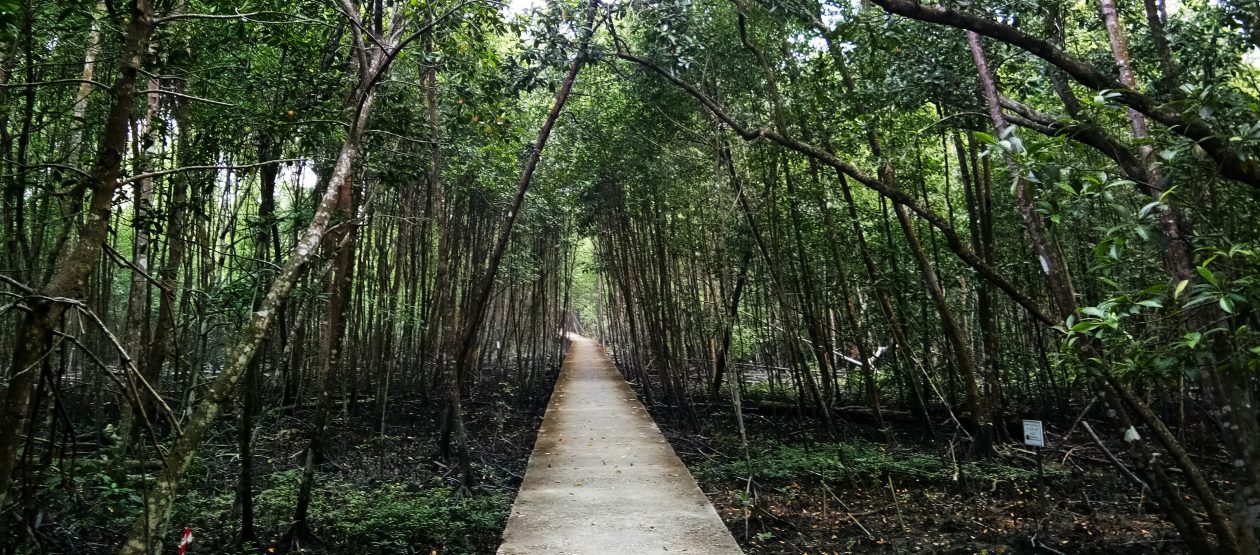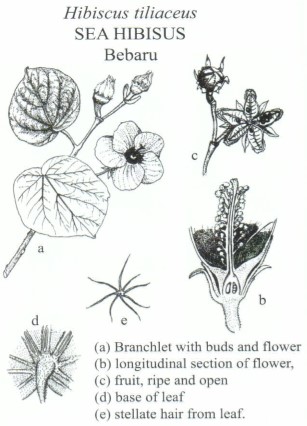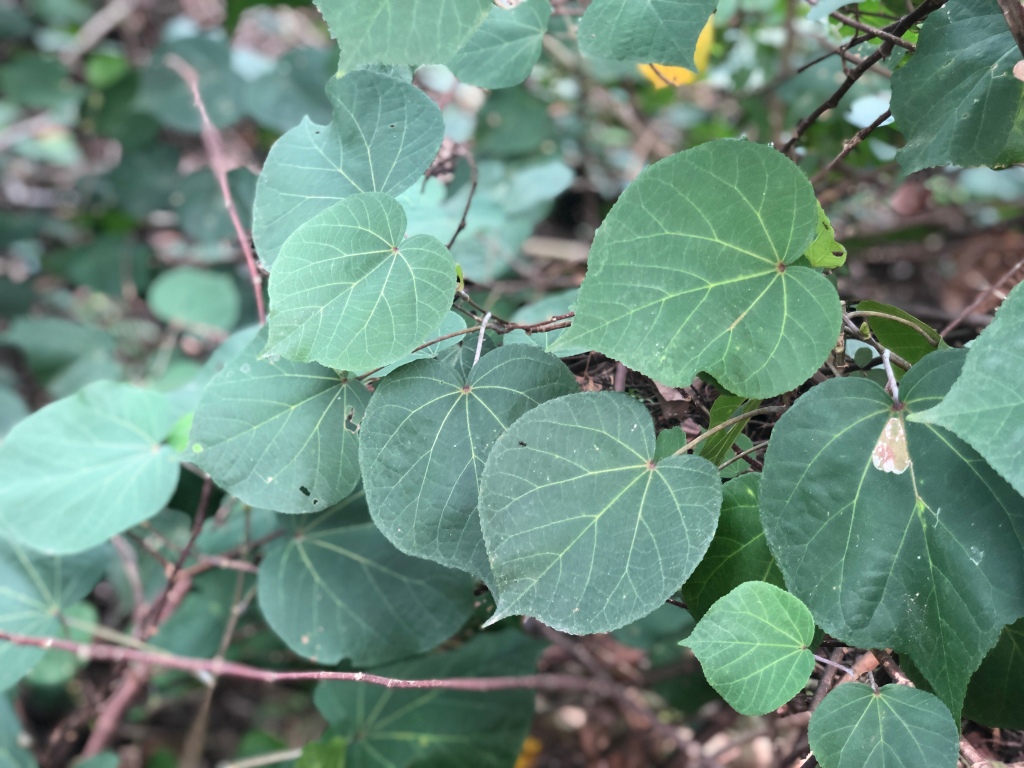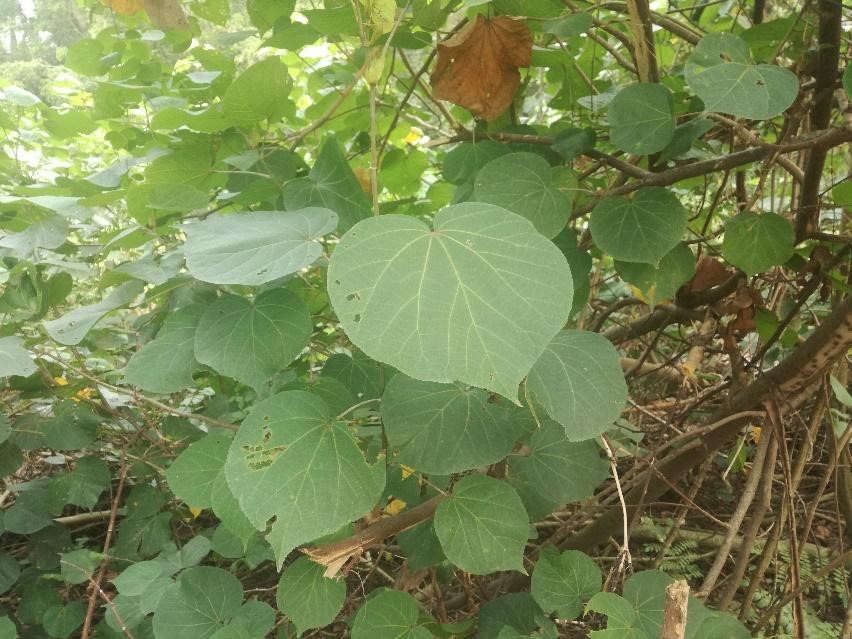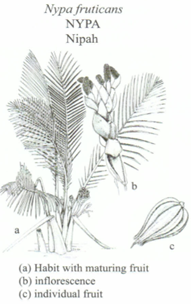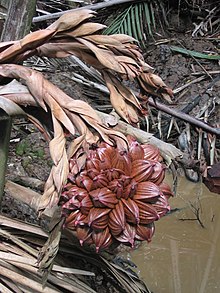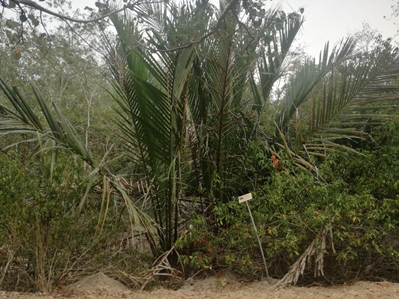CLICK BELOW FOR AUDIO GUIDE
Bruguiera gymnorhiza (black mangrove) is a small tree up to 10 metres (33 ft) high that belongs to the family Rhizophoraceae. It is found on the seaward side of mangrove swamps, often in the company of Rhizophora. Its bark is rough and reddish brown. The tree develops short prop-roots rather than long stilt-roots. Flowers are creamy white soon turning brown. The sepals are persistent, narrow and slightly tapered. When mature, the spindle-shaped fruits drop and become embedded in the mud in an upright position, where they rapidly develop roots. The black mangrove is a protected tree in South Africa.

One of the major problems for any plant growing in the highly saline conditions of a mangrove swamp is how to get rid of excess salt. Black mangroves achieve this by depositing the salt in old leaves, which are eventually killed by the concentrated “refuse” they contain. The leaves go yellow and fall, taking the excess salt with them, and so visitors to a mangrove swamp will see healthy trees dropping leaves at any and all times of year. Almost as soon as a leaf falls, one of the crabs ( Uca spp., and possibly others) in the swamp will quickly emerge, grab its prize and dash back to its hole, as these fallen leaves are a major item in the crabs’ diet.
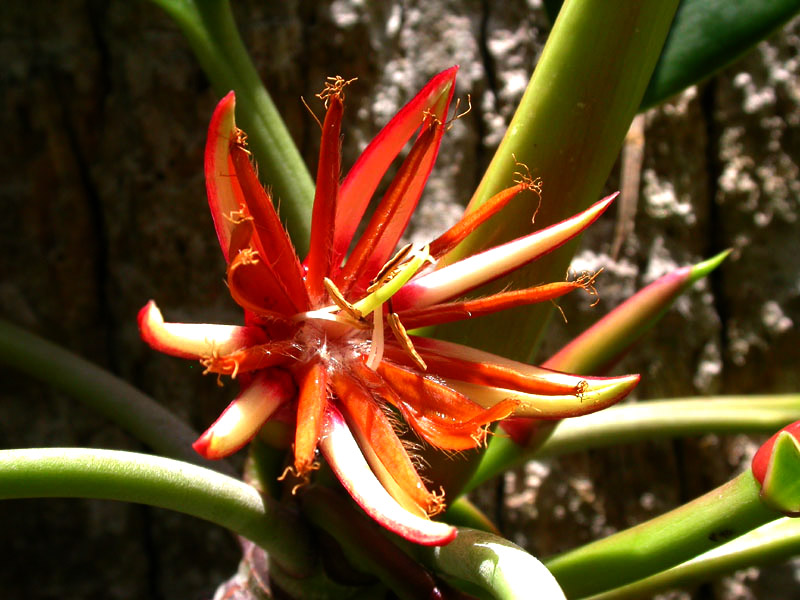
In the Maldives this mangrove is known as kaṇḍū. The propagules or green pods are eaten as a cooked vegetable. They are peeled first and then boiled, the water being discarded and renewed at least four times. The propagules of this species are more appreciated than those of Bruguiera cylindrica.
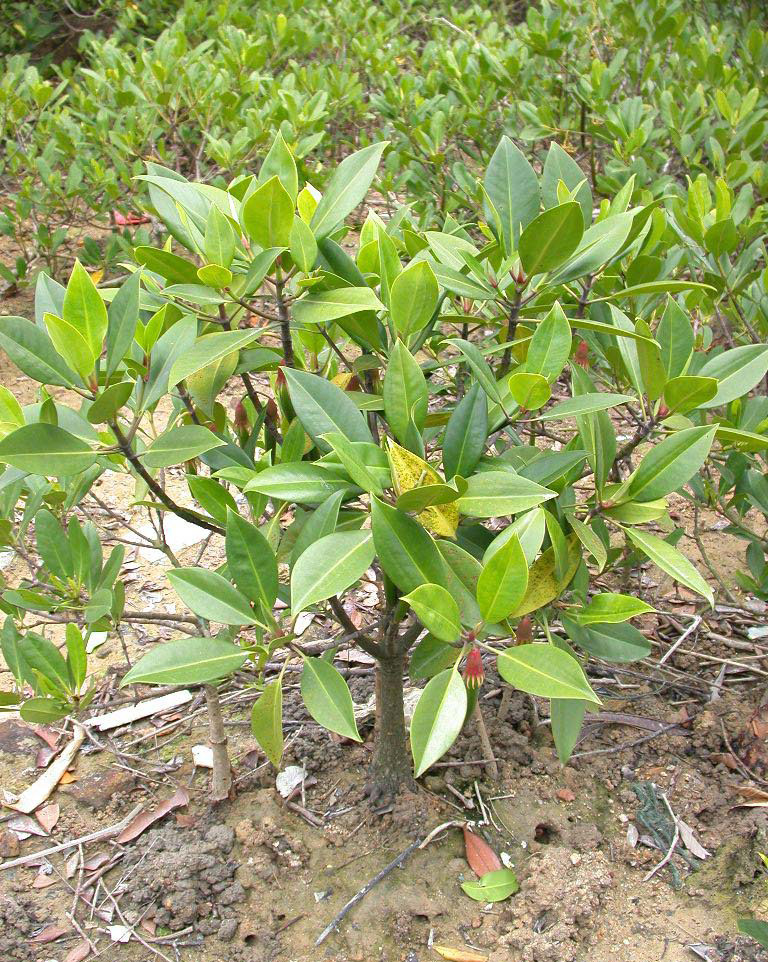
Mangrove wood is well known for being waterproof, resistant to borers, tough and effectively indestructible. This makes it highly prized and adds enormously to human pressure on the swamps throughout its range. Thus it was sad but not surprising on a recent (November 2002) visit to the mangrove swamps on Xefina Pequena Island (Maputo, Mozambique) that the only Bruguiera we saw was the skeleton of the boat we hired to reach the swamps. All the live trees had been felled for timber; in addition to making boats, poles are used to make fish traps and the frames of huts. In Malaysia, the wood is chipped for the manufacture of pulp and rayon, and fragments of wood are made into charcoal in many places. The bark is high in tannins, and so has been used for tanning. It also yields a black dye.
